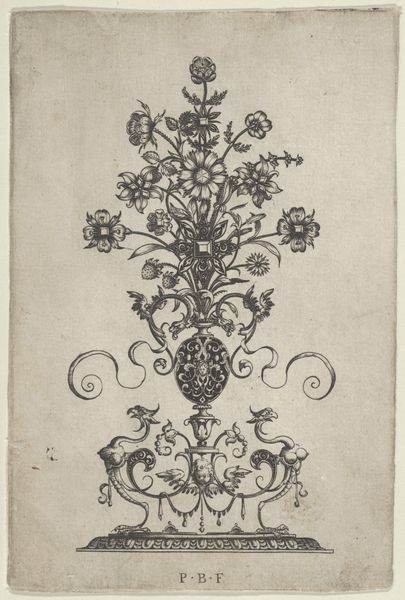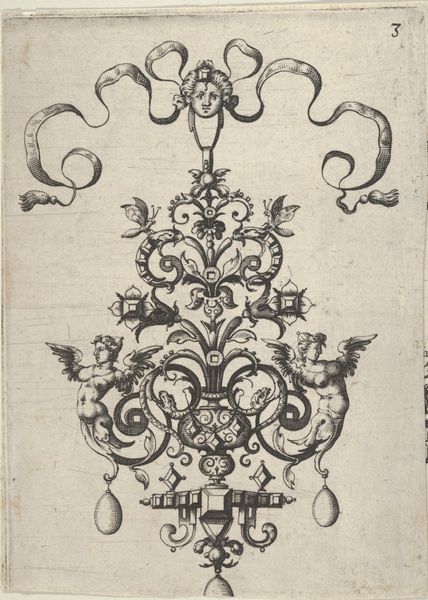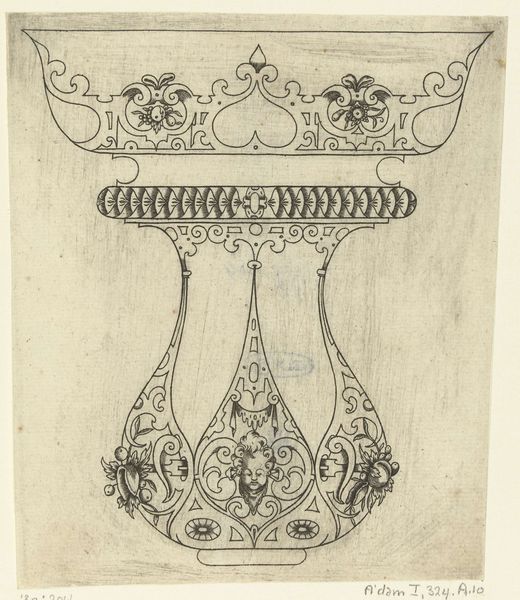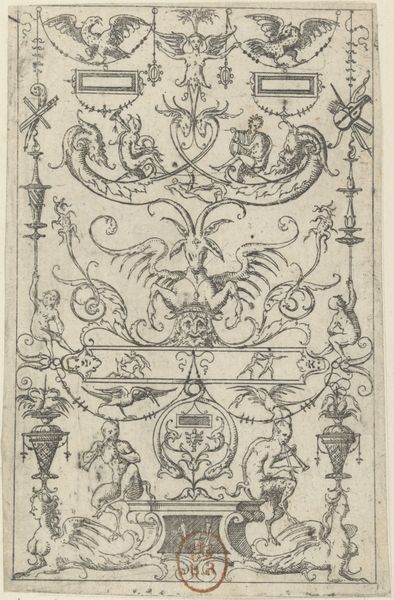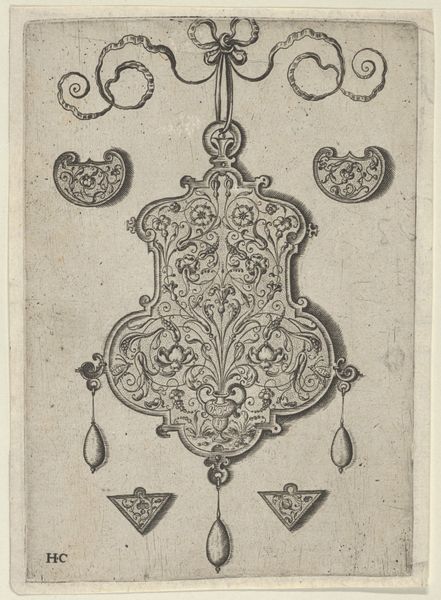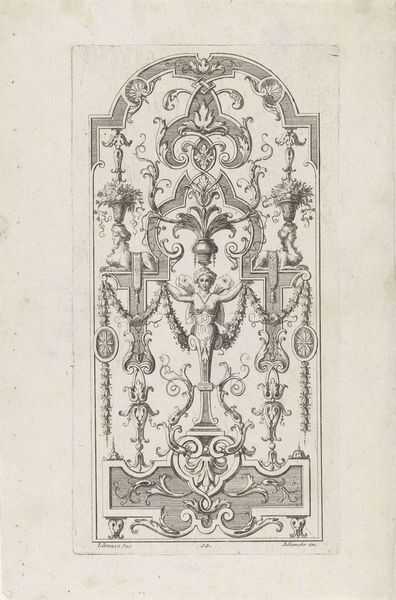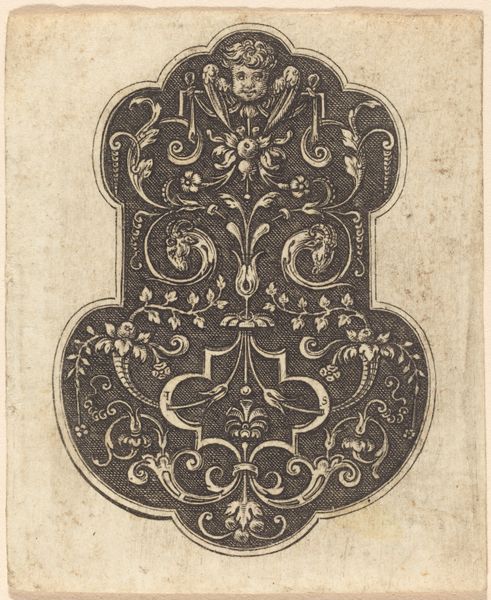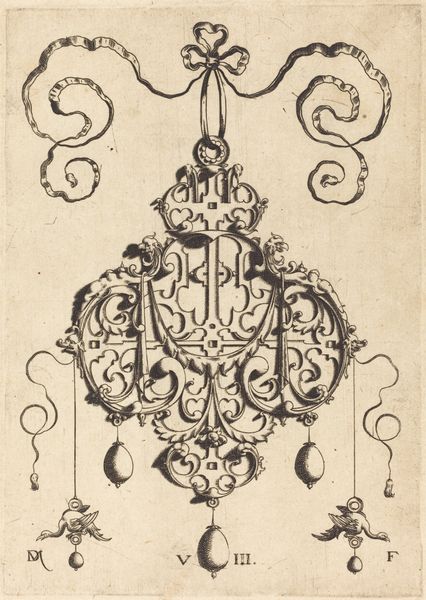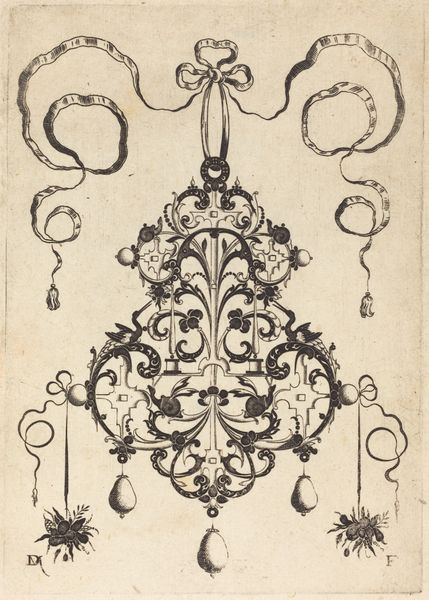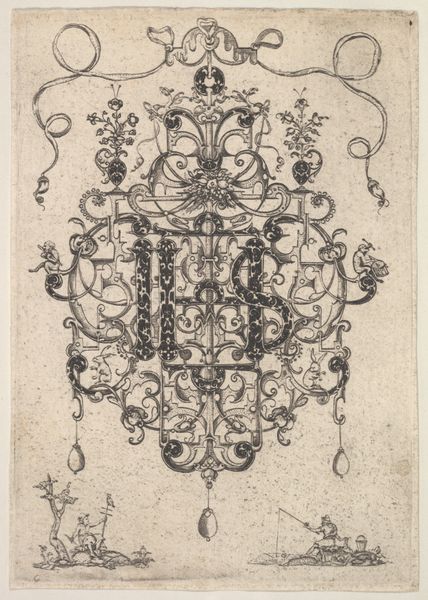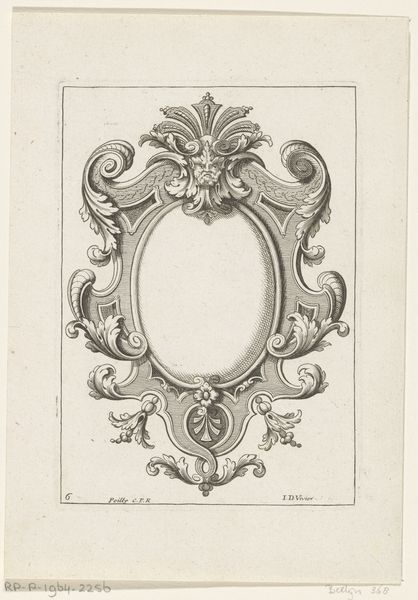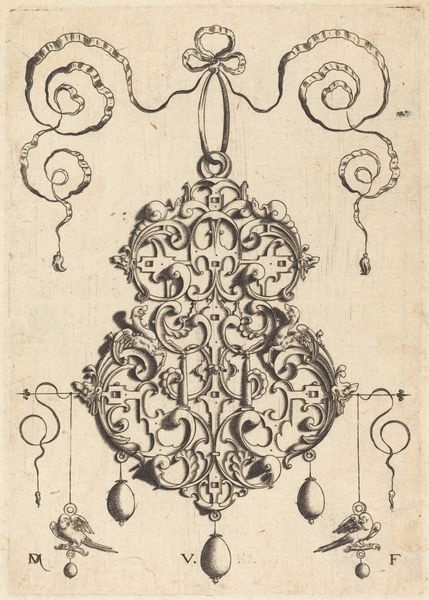
print, engraving
# print
#
figuration
#
11_renaissance
#
geometric
#
line
#
engraving
Dimensions: height 159 mm, width 124 mm
Copyright: Rijks Museum: Open Domain
This drawing of a tulip-shaped cup, whose maker is unknown, was created without a date using the etching technique. Here, the form is articulated by a linear network. It is a process that involves coating a metal plate with a waxy, acid-resistant substance, and then scratching into the material with a pointed tool. After the plate is submerged in acid, the exposed lines are eaten away, leaving behind a design that can then be inked and printed. The resulting image, as seen here, is characterized by fine, delicate lines and intricate details. It is important to understand the historical context of this technique. Etching allowed for the relatively easy dissemination of imagery, playing a crucial role in the circulation of designs, knowledge, and ideas. It democratized image-making, enabling a wider audience to engage with art and culture beyond the elite circles of patronage. This particular design might have been used to guide the creation of luxury goods in other materials, precious metals or ceramics.
Comments
No comments
Be the first to comment and join the conversation on the ultimate creative platform.
